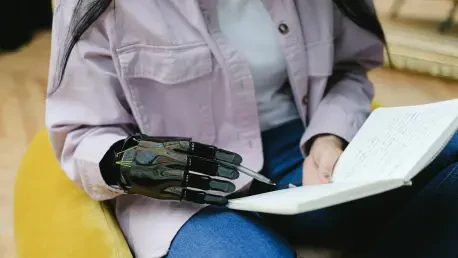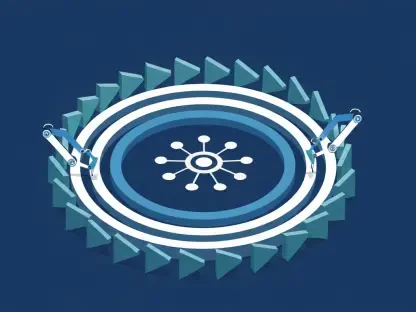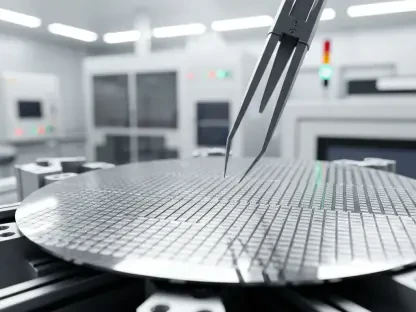Imagine a world where robots can handle a delicate glass vase or a slippery wet bottle with the same finesse as a human hand, adapting instantly to prevent a drop or a shatter. This vision is no longer a distant dream but a tangible reality thanks to groundbreaking advancements in bio-inspired robotic manipulation. This technology, drawing from the intricacies of human motor skills, is revolutionizing how robots interact with their environment, offering solutions to long-standing challenges in dexterity and safety. The ability to mimic human predictive behavior and adjust movements in real-time marks a pivotal shift in robotics, promising to enhance applications across diverse sectors. This review delves into the core features, performance, and transformative potential of bio-inspired robotic systems, shedding light on their role in shaping the future of automation.
Core Features of Bio-Inspired Manipulation Technology
Predictive Slip Control: Anticipating Failure Before It Happens
At the heart of bio-inspired robotic manipulation lies predictive slip control, a mechanism that enables robots to foresee potential slip events and react proactively. Unlike traditional systems that merely increase grip force, this technology employs data-driven internal models, akin to the human brain’s predictive capabilities, to assess sensory input and anticipate when an object might slip. By processing real-time data, the system adjusts the robot’s grip or movement before a mishap occurs, ensuring safer handling of objects ranging from sturdy tools to fragile items.
This innovation stands out for its ability to integrate seamlessly with existing robotic frameworks, enhancing their functionality without requiring extensive hardware overhauls. The predictive model relies on continuous learning, refining its accuracy with each interaction to better handle diverse textures and weights. Such adaptability is crucial for tasks where precision is paramount, reducing the risk of damage and improving overall efficiency in dynamic settings.
Trajectory Modulation: Precision Through Motion Adjustment
Complementing predictive slip control, trajectory modulation offers a nuanced approach to robotic handling by adjusting the path and speed of a robot’s movements in real-time. Instead of relying solely on brute force to secure an object, this technique allows the robotic hand to slow down, reposition, or tilt as needed to maintain control. This is particularly beneficial when dealing with delicate materials or in environments where grip strength alone is insufficient.
The significance of trajectory modulation lies in its capacity to mimic human subtlety, enabling robots to navigate complex scenarios with finesse. For instance, when handling a fragile medical instrument, the system can decelerate its approach to avoid sudden impacts. This level of control not only enhances safety but also broadens the scope of tasks robots can perform, from intricate assembly work to everyday household chores.
Performance in Real-World Environments
The true test of bio-inspired robotic manipulation lies in its application across unstructured, real-world environments, where unpredictability reigns supreme. Rigorous testing on robotic grippers has demonstrated that systems equipped with predictive slip control significantly outperform conventional grip-force-based controllers in maintaining grasp stability. Whether handling slippery surfaces or adapting to sudden shifts in object weight, these robots exhibit a remarkable ability to respond with human-like precision.
In sectors like manufacturing, the technology has shown promise in automating assembly lines where delicate components must be placed with exacting care. Similarly, in healthcare settings, robots using trajectory modulation can assist with tasks such as transporting sensitive equipment, minimizing the risk of mishaps. These real-world successes underscore the potential for bio-inspired systems to bridge the gap between controlled lab conditions and the chaos of everyday scenarios.
Beyond individual performance, the integration of machine learning into these systems allows for continuous improvement over time. As robots encounter new challenges, their internal models evolve, refining predictive accuracy and movement adjustments. This adaptability positions bio-inspired manipulation as a scalable solution, capable of meeting the demands of increasingly complex applications.
Challenges Hindering Wider Adoption
Despite its impressive capabilities, bio-inspired robotic manipulation faces several hurdles that must be addressed for broader implementation. One primary concern is the computational complexity involved in real-time predictive control, which can strain processing resources and slow down response times in high-speed tasks. Optimizing controller efficiency remains a critical area of focus to ensure seamless operation in demanding environments.
Hardware limitations also pose a barrier, as current robotic designs may lack the tactile sensitivity or mechanical flexibility needed to fully leverage bio-inspired techniques. Upgrading these components to match the sophistication of predictive models is essential for maximizing performance. Additionally, the opacity of learned models raises questions about transparency, necessitating efforts to make decision-making processes more explainable to build trust in autonomous systems.
Safety remains another key issue, especially as robots take on greater autonomy in interacting with humans and unpredictable surroundings. Ensuring that predictive adjustments do not lead to unintended consequences requires robust fail-safes and rigorous testing protocols. Addressing these challenges is vital to unlocking the full potential of this technology across diverse fields.
Final Thoughts and Next Steps
Reflecting on the journey of bio-inspired robotic manipulation, the strides made in predictive slip control and trajectory modulation have proven to be game-changers, elevating robotic dexterity to unprecedented levels. Testing in dynamic environments has validated the superiority of these systems over traditional methods, showcasing their ability to handle a wide array of tasks with remarkable adaptability. The impact on industries like healthcare and manufacturing highlights the practical value of mimicking human motor skills in robotic design.
Looking ahead, the focus should shift toward overcoming computational and hardware constraints through targeted innovations, ensuring that real-time control becomes faster and more efficient. Integrating complementary technologies, such as computer vision with tactile data, could further enhance trajectory planning, enabling robots to tackle even more intricate tasks like manipulating deformable objects. Additionally, prioritizing transparency in learned models will be crucial to fostering trust and safety as autonomy increases. By addressing these areas, the path is clear for bio-inspired robotic manipulation to redefine human-robot collaboration in the years from 2025 onward, paving the way for smarter, safer, and more capable automated systems.









